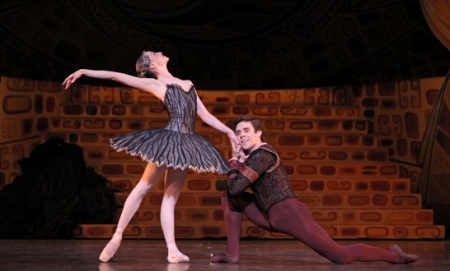Nova Arts Project: Thom Pain

Sean Patrick Judge as Thom Pain.
Photo by Sarah White.
Thom Pain wants to mess with your head. He's a storyteller, damaged lover, lunatic, loner, whack motivational speaker, lapsed existentialist, comic, poet, monologist, antihero, misguided teacher, philosopher, master of indecision, surreal host, huckster, everyman, entertainer, magician, advisor, rogue sage, ringmaster, confessor, broken optimist and hopeful pessimist. Did I miss anything? Probably, as it's easy to miss the nuances of Pain's personality, or if you prefer, personality disorder, in Will Eno's riveting monologue, Thom Pain, presented by Nova Arts Project at DiverseWorks Arts Space in Houston, TX.
Pain has come to tell a tale of his own life, two to be exact: one about a boy, his dog, its unfortunate demise from electrocution, the boy's battle with a pesky bee hive, and his unremarkable adulthood; another, about the love of his life, the perfect romance, broken but full of promise. At times, it seems Pain goes into a meditative trance in the telling, taking us willingly with him off more than one verbal cliff as the tales get interrupted by quirky distractions, jokes missing their punchlines, random thoughts, raffle news, his fixation on the audience and snippets of solid philosophical truisms.
There's a purposeful drive leading Pain to finish his stories, and he does as best he can. The energy of going on and off topic sets up a rhythm, a predictability that diffuses the anxiety of being in close quarters with a loose canon. He pulls us in with large ideas, then blows us off. He pushes us in with odd requests, then lets us off the hook. Pithy banter eases the sting of the darker moments, and there are many. “The dead horse of a life we beat, all the wilder, all the harder the deader it gets. On the other hand, there are some nice shops in the area.” There's no shortage of push, pull, tug and shove in Eno's play, yet the back and forth energy lends a momentum. It's as if Pain's true pain leaks out despite his best efforts.
Eno's play examines the anatomy of anxiety-based humor with enough emotional oscillations to unsettle, disturb, and disarm. Nervous laughter has never before been this satisfying. His language lulls us into the depth of these strange and non-linear tales, elevating passive aggression to an art form. “In fact you're all so wonderful I'd like to take you home, leave you there, and then go somewhere else.”
Seán Patrick Judge bestows Pain with a sneaky dignity. Dressed in a black suit, white shirt, and over-sized black-rimmed glasses, he comes off as capable, a generic professional with a mission. Is it the warmth in his resonant baritone, or the forgiveness in his eyes, or his sheer diligence to get the job done? Judge inhabits Pain's mania with a well-worn quality, never failing to give the cacophony of sometimes unconnected thought sequences some soul. Even in his most acerbic lashes, he's tolerable, sometimes even likable and always believable. Sure, he gets too close sometimes, yet backs away at just the right moment, taking us to the edge of our comfort. There aren't too many soft edges in Eno's play, but Judge finds and uses them all.
Matt Huff, new to Houston and Nova Arts, directs with an eye for Eno's brand of minimalism, letting the language determine the pace and allowing awkward silences to penetrate and punctuate as places for the play to breathe. Brian White's nearly-there set consists of a largely empty black box space, a small table with a pitcher of water and a glass, and one curious upstage ladder. Sarah White's harsh white light add to Eno's off center tone.
Close to the end, Judge stands dead center in a pool of white light, fists clenched, eyes closed, looking upwards as if in prayer, reciting a litany of human actions. “I sniffed butterflies. I pissed on things, ...I ate scraps, wanted to be a cowboy.” In those dead serious moments, the facade fades, the person emerges, and, through his unadorned vulnerability, we get it. Despite every misstep of his mangled journey, Pain still marvels at life's mysteries. Pain asks, “If they ask you where you've been, please just don't say that you were out somewhere watching someone being clever, watching some smart-mouthed nobody work himself into some dumb-ass frenzy. Please say instead... that you saw someone who was trying.” That we did.
Pain's final humble request aims at the heart, “I know this wasn't much, but let it be enough.” We need to do that too.
Nova Arts Project presents Will Eno's Thom Pain through July 3 at 8pm at DiverseWorks. Call 1-800-595-4849.
Reprinted from Culturevulture.net.









